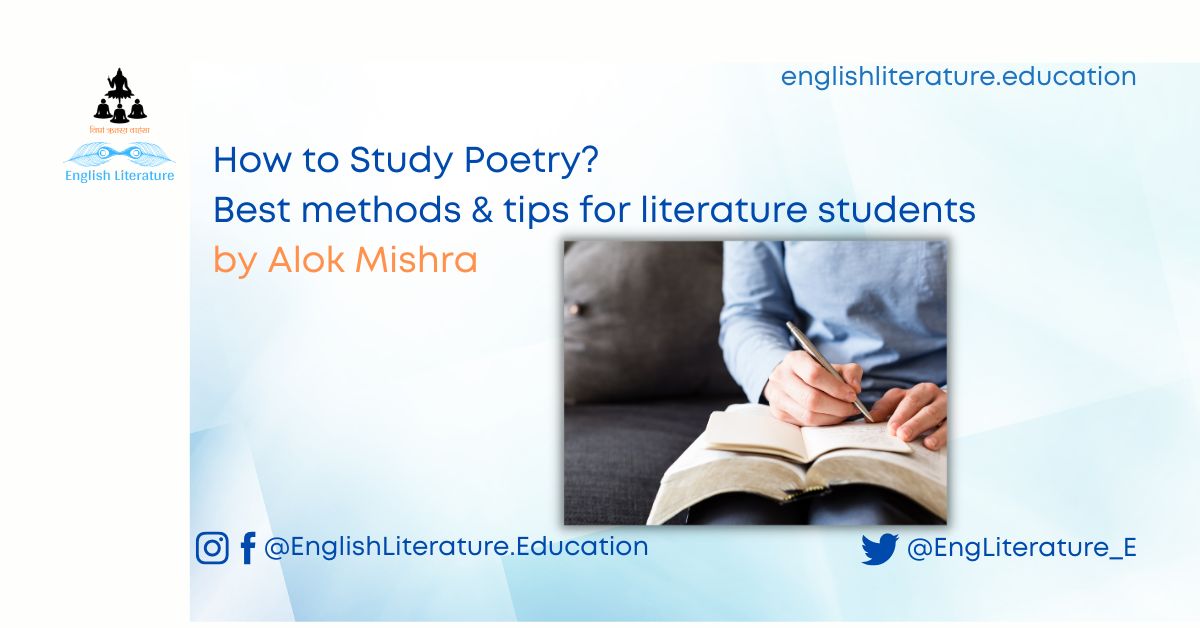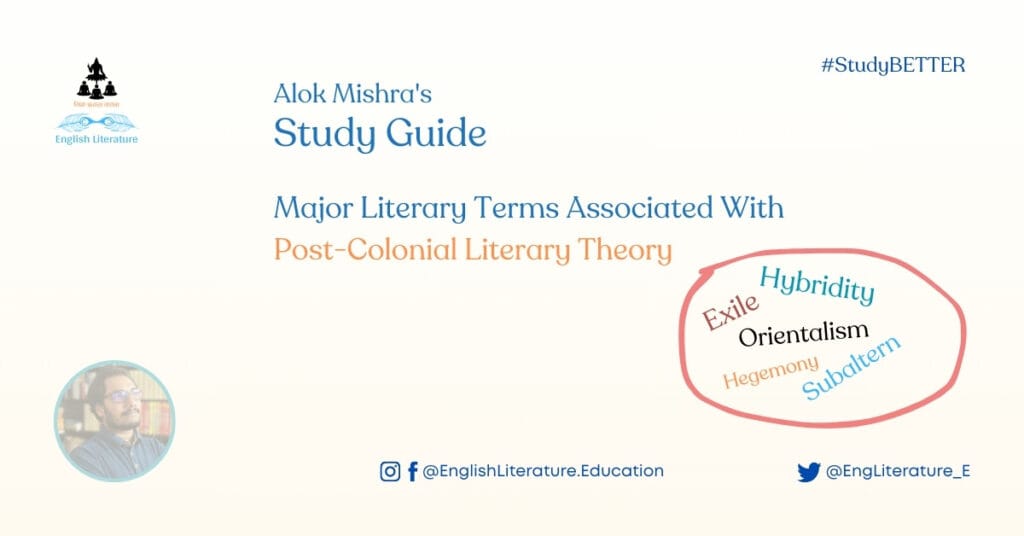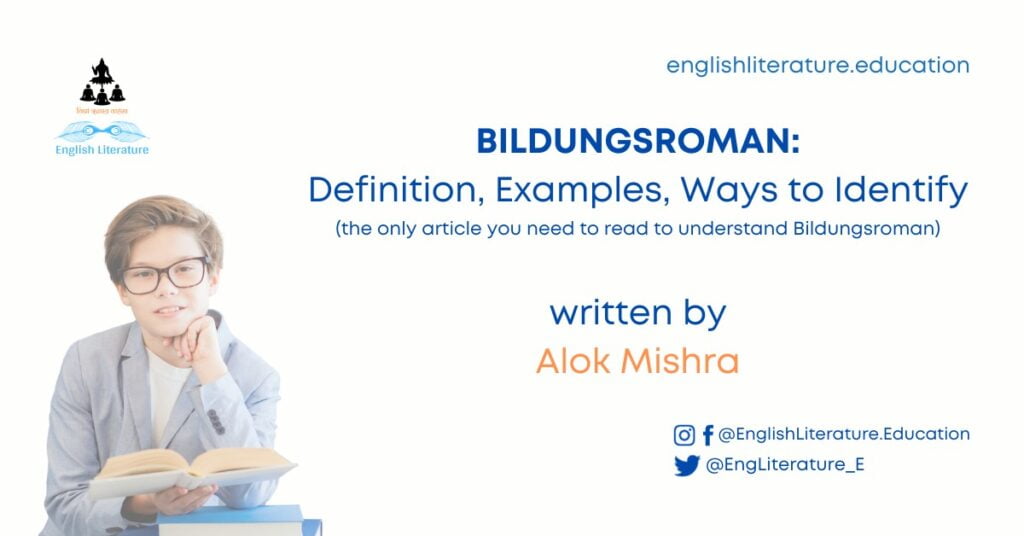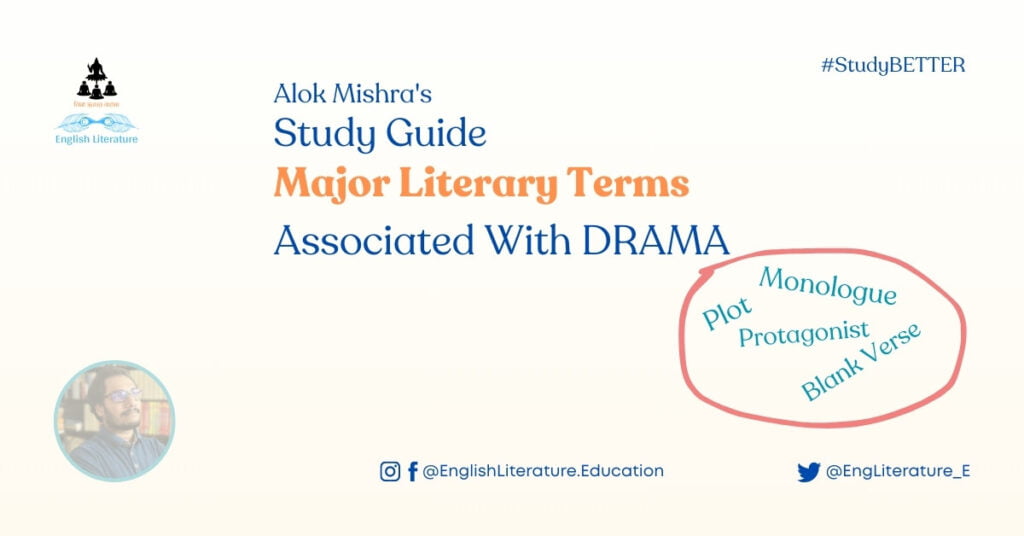There can be no debate on how to read poetry. It’s open; I can read the way I like and you can do it the way you want. However, when it comes to studying poetry, we have to be careful. Studying poetry must have purposes other than enjoying the leisure with some verse on the menu. It might associate with academic requirements, understanding a particular poet, poem or even the age of a particular style of poetry. So, there must be some ways to study poetry; there might be many but we need to focus only on those which can be useful for our productivity, comprehension and intellectual outcome. In this article, we will be exploring a few useful practices while studying poetry.
1. Decide the purpose of studying poetry:
Why are you studying poetry? Is it because you have to study a poem prescribed in your academic syllabus? Is it a part of studying and understanding a particular poet? Sometimes, a poetry by different poets is also studied in order to understand the common points in the poetry of a particular age – the Elizabethan Poetry, Victorian Poetry, Romantic Poetry…
Once you decide the purpose of your studying poetry, it becomes easy to move ahead and find the desired outcome(s) once you finish.
2. Studying one poem Vs Studying many poems by the same poet:
Yes, it changes the game! If you only have to study a single poem by any poet, it becomes easier for you as a reader because you don’t have to go beyond the number of lines given on the page. However, when you need to study more than one poems by any particular poet, your approach needs to be different. For example, studying one sonnet by Shakespeare is entirely different from studying the entire sonnet series by him. In studying a single poem, the interpretation, the implications, the assumptions and the perceptions are fairly limited and subject to the singular subject – given poem. In case of a series of poems or more than one poems, even two, you will have to keep both the poems in mind while reading one. This is, to put in words, a collective study – you will need to remember the references, the figures, the collective meaning, the common points and the possible refrains. Nevertheless, there are a limited number of poetry series which are generally prescribed in the college or university syllabuses.
3. Facing the subject: face to face with a poem
When the poem comes in front of you, you need to read it. There is no escape! Don’t panic. Give it a casual read – take a glance. You will find the lines decorated with words which mean sometimes otherwise and sometimes the face value is taken to be the actual meaning as well. In the first read, there will be random ideas which will come to your mind. In the second read, there will be one common point which will come to your sight and go away rapidly. In the third read, you will catch the tail and done! That’s the meaning of the poem for you! Sounds easy? Let’s do it!
“Life! I know not what thou art,
But know that thou and I must part;
And when, or how, or where we met,
I own to me’s a secret yet.
Life! we’ve been long together,
Through pleasant and through cloudy weather;
’Tis hard to part when friends are dear;
Perhaps ’t will cost a sigh, a tear;
Then steal away, give little warning,
Choose thine own time;
Say not Good night, but in some brighter clime
Bid me Good morning. “
by Anna Laetitia Barbauld
(Poem number 165, page number 168 – Palgrave’s Golden Treasury)
The Golden Treasury presents this beautiful part-poem as it omits some lines from the between. However, for our purpose, this is a very suitable poem. Let’s try to come to a sensible conclusion by reading these two stanzas by Anna.
What will we do?
i. Try to find the form of the poem (if any)
ii. Try to find the people or things involved in the poem (if any)
iii. Try to set the roles of the people or things involved
iv. Try to decide the surface meaning or the face value
v. Try to find the hidden layer beneath the surface meaning (if any)
vi. Look for the common idea which connects the hidden or the apparent meaning of the poem
vii. Conclude our assumption
What is the form? It’s a dialogue form where the poet is talking to something abstract – life. Life cannot indulge in a conversation and hence the poet is actually having a monologue and she is expressing her views. The poet seems to suggest that she does not know life very well. When did they meet and where and under which circumstances, these questions are still unknown. However, one thing, the poet asserts, is certain that life and the poet have to part.
In the second stanza, the poet brings an analogy and tells the readers that parting with dear friends is always tough. It often involves tears and sorrows. And because the poet had long been with life (she might be referring to her age), a dearness between them has been established. And lastly, the poet might be requesting to life for a calm and pleasant parting. She wants a ‘brighter clime’ when they part – life and the poet.
The ‘common idea’:
Life and human beings – we are all alive and we will all die! However, most of the times, the thought of death frightens us. The poet is suggesting that we should accept the truth and only wish that the ‘parting,’ which is death, comes lighter on us.
So, you have just studied a poem! And that’s a practical example of how do we study poetry.
4. The most important thing:
Study of poetry is always open and it must not be closed. So, never assert your authority on the text you are supposed to study. You must notice that in the poem given above, we have only ‘assumed’ what the poet ‘might’ be ‘suggesting’. It has become a common habit among the students as well as the teachers that they authoritatively say ‘what the poet means’ and this habit, to be frank, is very ugly! How can we know for sure what the poet ‘said’ many centuries ago? We can only assume and look for the clues which lead us to a sensible conclusion. Be careful; don’t be the poet yourself. Be sensible readers and try to respect the beautiful manifold of meanings that a poetic text brings to us!
5. Group study of poetry can be helpful:
If you have more than two friends, it will actually be fun. Try studying the same poem with your friends and share your interpretations with each other. Do you find something in common? Which among you brings the most connected and most sensible interpretation of the poem?
So, these are a few of the practices which can make studying poetry fun and also easy. At the same time, these practices will also make the students analytical and critical. The outcome will certainly be more fruitful on various fronts. All the best guys!
Article by Team English Literature





2 Comments. Leave new
This article was very helpful. Many thanks for sharing it. I am sure any beginner will understand how to study poetry after reading this amazing piece.
Very well-described article! I have read it very carefully and it’s worth sharing guide on studying poetry. Thanks for the work!